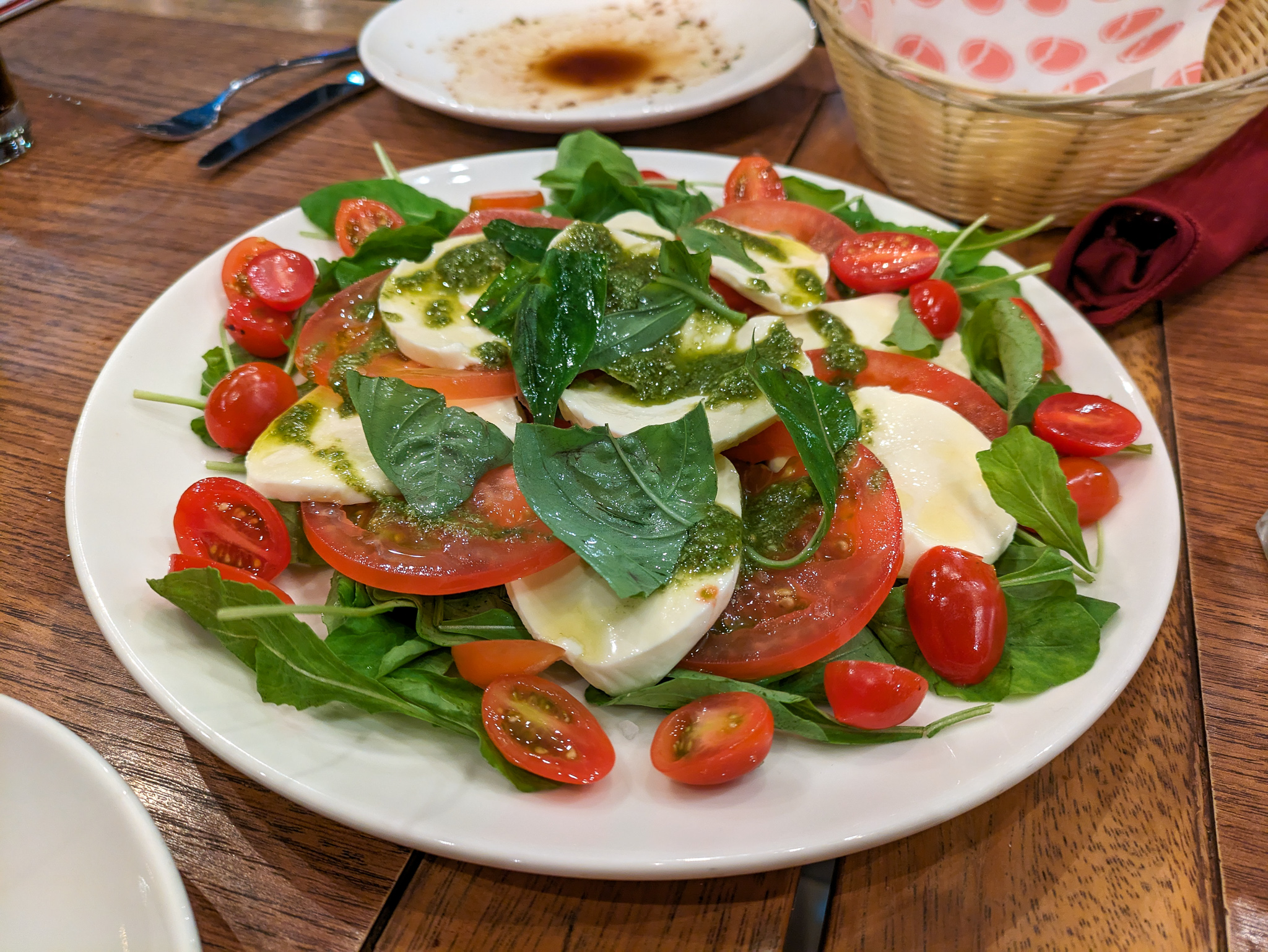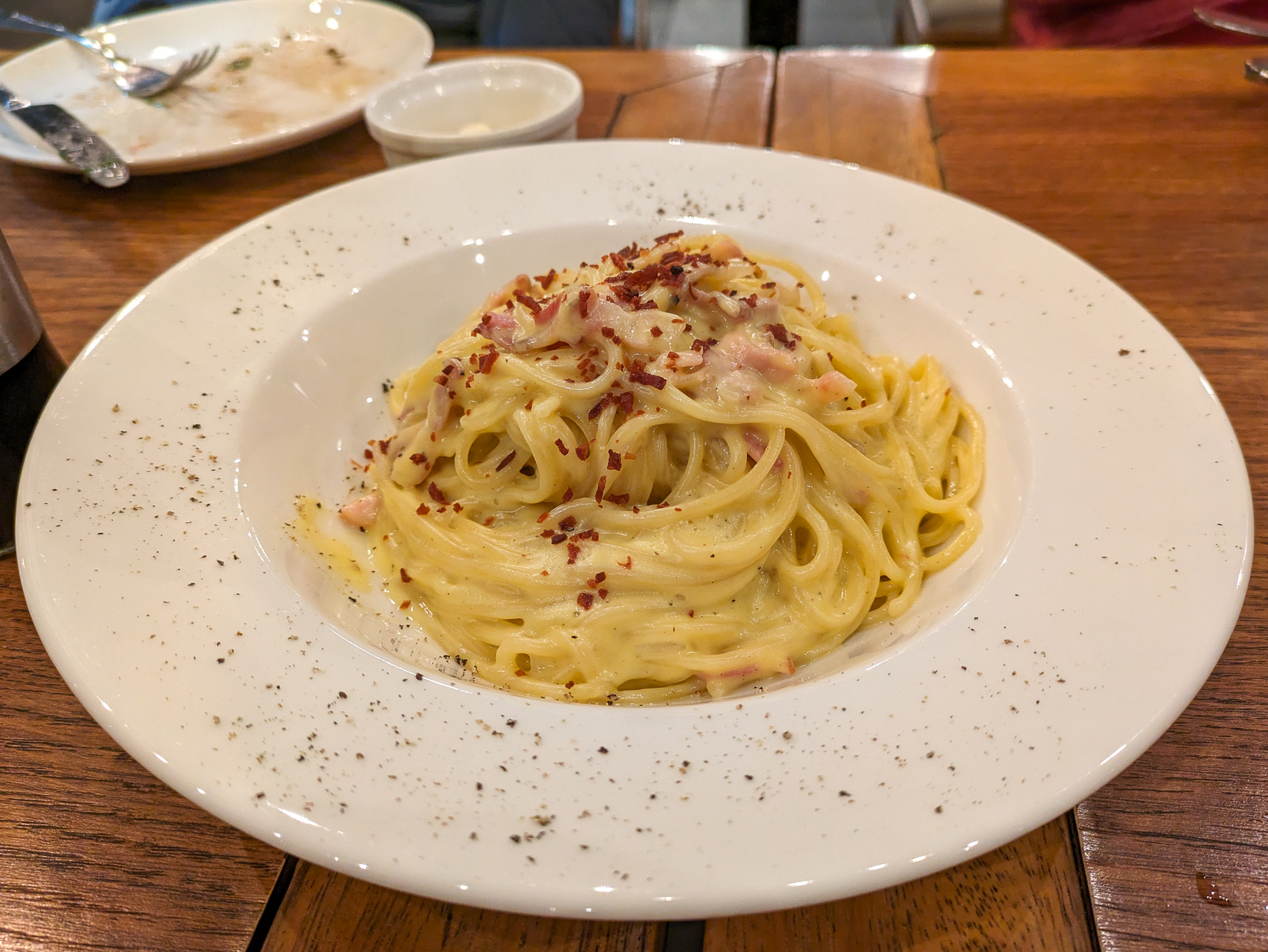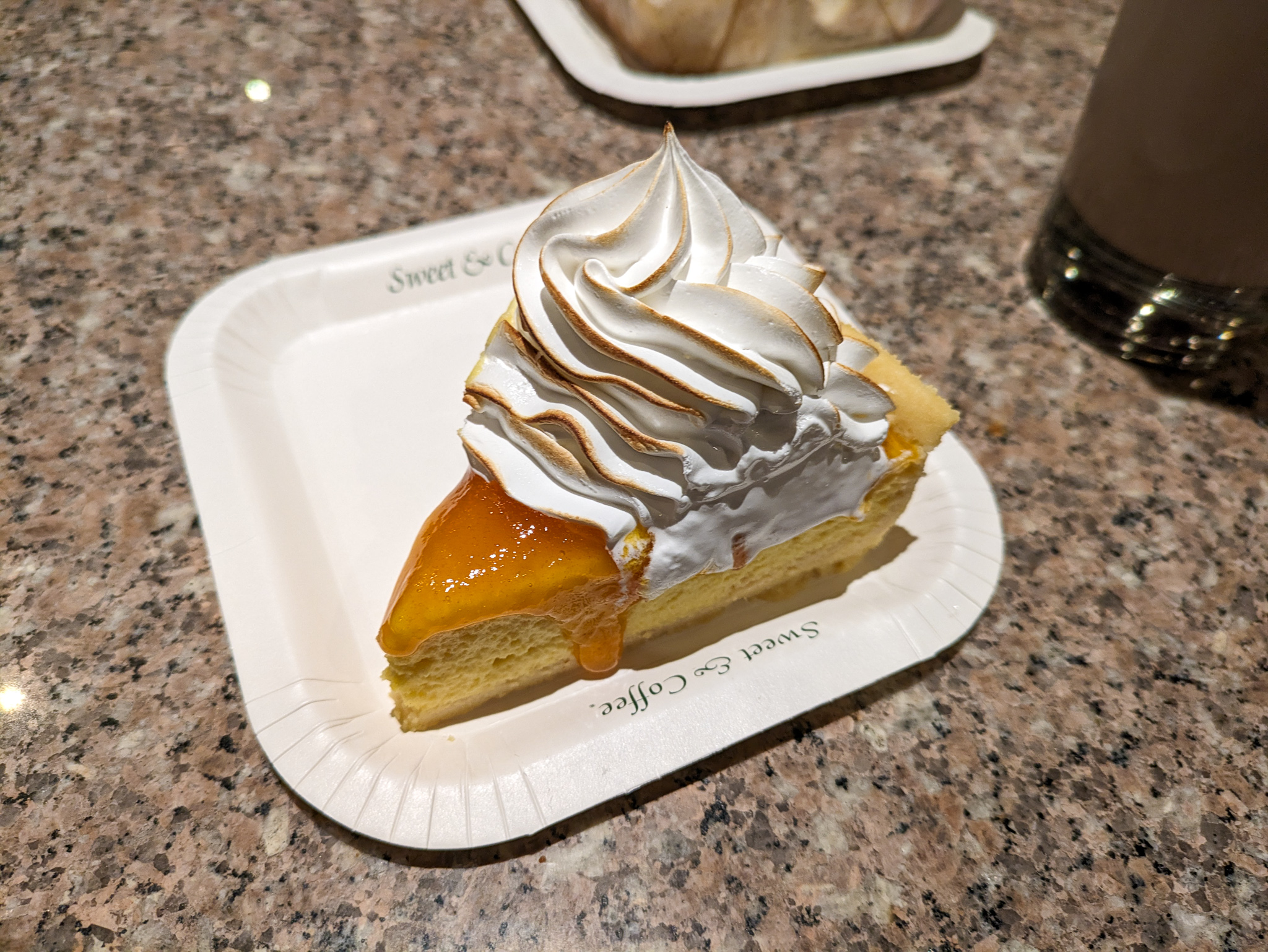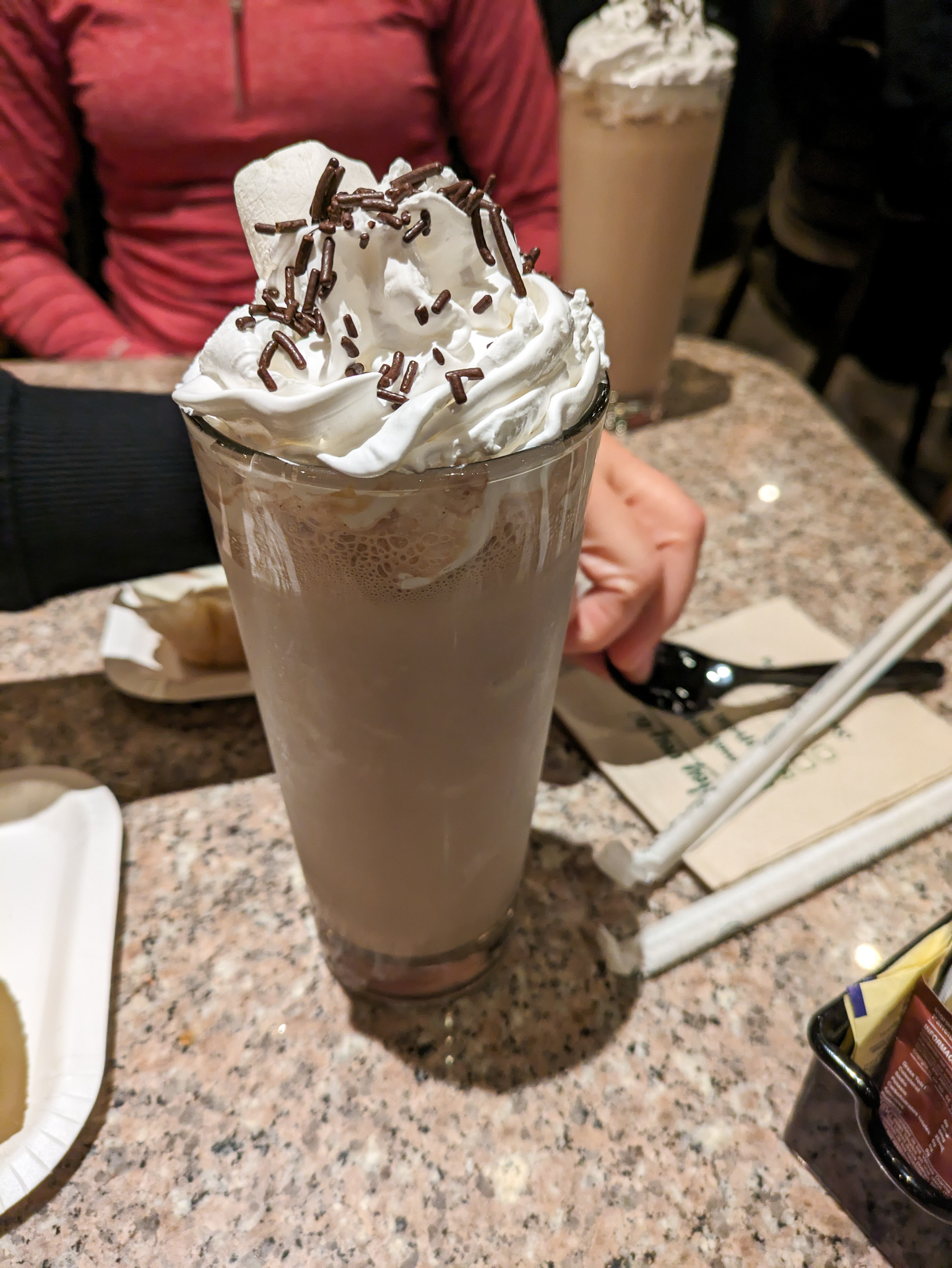At over 19,300 feet, Cotopaxi is very high. It’s the second highest peak in Ecuador (after Chimborazo). It is the third highest active volcano on the planet. Because of its proximity to the equator and the equatorial bulge caused by the spin of the earth, its peak is nearly 6,000 feet further from the center of the Earth than Mount Everest.
Dangerous Volcano
Cotopaxi is an active stratovolcano, which means it is prone to violent and explosive eruptions. It is considered one of the most dangerous volcanoes in the world due to its height, its large glacial cone, and its proximity to densely populated areas. The Ecuadorian government estimates more than 300,000 people are at risk from the volcano. Previous eruptions have completely melted the glacial cone, sending pyroclastic flows more than 65 miles in every direction… sending mud and debris into the Amazon and all the way to the Pacific Ocean, destroying cities and towns that got in the way. The last “major” eruption was in 1903-1904 with “minor” activity that has come and gone ever since. The mountain really woke up again in 2015 with a series of more than 2,000 earthquakes per month while releasing two large steam eruptions later that year. In October 2022 it began spewing ash. The ash has continued to rise from the cinder cone, turning the glacial cone almost completely black at this point.
Scientist say Cotopaxi “remains in a very abnormal situation.”
There is a climbers refuge lodge at about 16,000 feet high, just below the glacial cone. Nobody is allowed to climb the upper mountain until it calms down again. On Easter Sunday in 1996 an avalanche buried the refuge and killed 13 people higher on the mountain. Those in the refuge had to break windows on the lower side of the slope and climb out to safety. Cotopaxi is a huge tourist draw and the government doesn’t want anything to happen to those drawn to the mountain (like us).
Altitude Sickness
Despite having some minor challenges with altitude sickness a few years ago in Cuzco, Peru, I wasn’t too worried about it in Ecuador. I felt a minor headache at the top of the tram yesterday, but figured I would feel better after we came back down to the city. I didn’t really notice it again until that night. It continued to build and by 1:00 am I couldn’t sleep anymore. The pain was getting crazy. I never get headaches of any kind – not even when I’m sick. I can count the number of headaches I have had in the past year – including this one – on one finger. I was concerned when it kept getting worse. By 2:00 am I was out of bed, sitting in a chair by the window, pressing my hands into my head in a vain attempt to relieve some pressure. And I was crying. I am a wimp. I couldn’t help it. Eventually I got in the shower and just stood under the waterfall for about an hour. By some magic, that stimulation on my head and neck made things better. By 3 or 4 I was able to climb in bed and actually sleep for a bit. It was so nice.
We went down to breakfast just before 7 this morning. We skipped breakfast yesterday, so we didn’t really know how good it would be. We expected a pretty good spread based on the quality of the hotel and our expectations were met. It wasn’t a crazy amazing spread, but it had plenty of high quality options and we went away satisfied. I even packed a banana for today’s adventure.
We met our tour guides on the edge of Parque La Carolina, which is basically across the street from our hotel. It took couple hours to get from Quito to Cotopaxi National Park. Ecuador is amazingly beautiful and its beauty was on full display as we drove. Our guides told us the name Cotopaxi means “neck of the moon” in Quechua and Aymara.
Above the Tree Line
We are used to phrases like “above the tree line” which is the line above which there are no trees because the air pressure is too low. As we drove through Cotopaxi National Park towards the mountain, we were well above the tree line. The only thing able to grow at this elevation is Páramo, an alpine tundra. The clouds blocking Cotopaxi cleared momentarily so we all piled out of the van onto the road for some quick pictures, not knowing if we would get another chance to see the mountain this trip. It was a little sad to see the upper mountain looking so dark, with the entire glacial cone covered in black volcanic ash that continues to spew from the top. But it was still exciting to see such a high peak. Moments later the clouds rolled right back in and obscured the mountain once again.
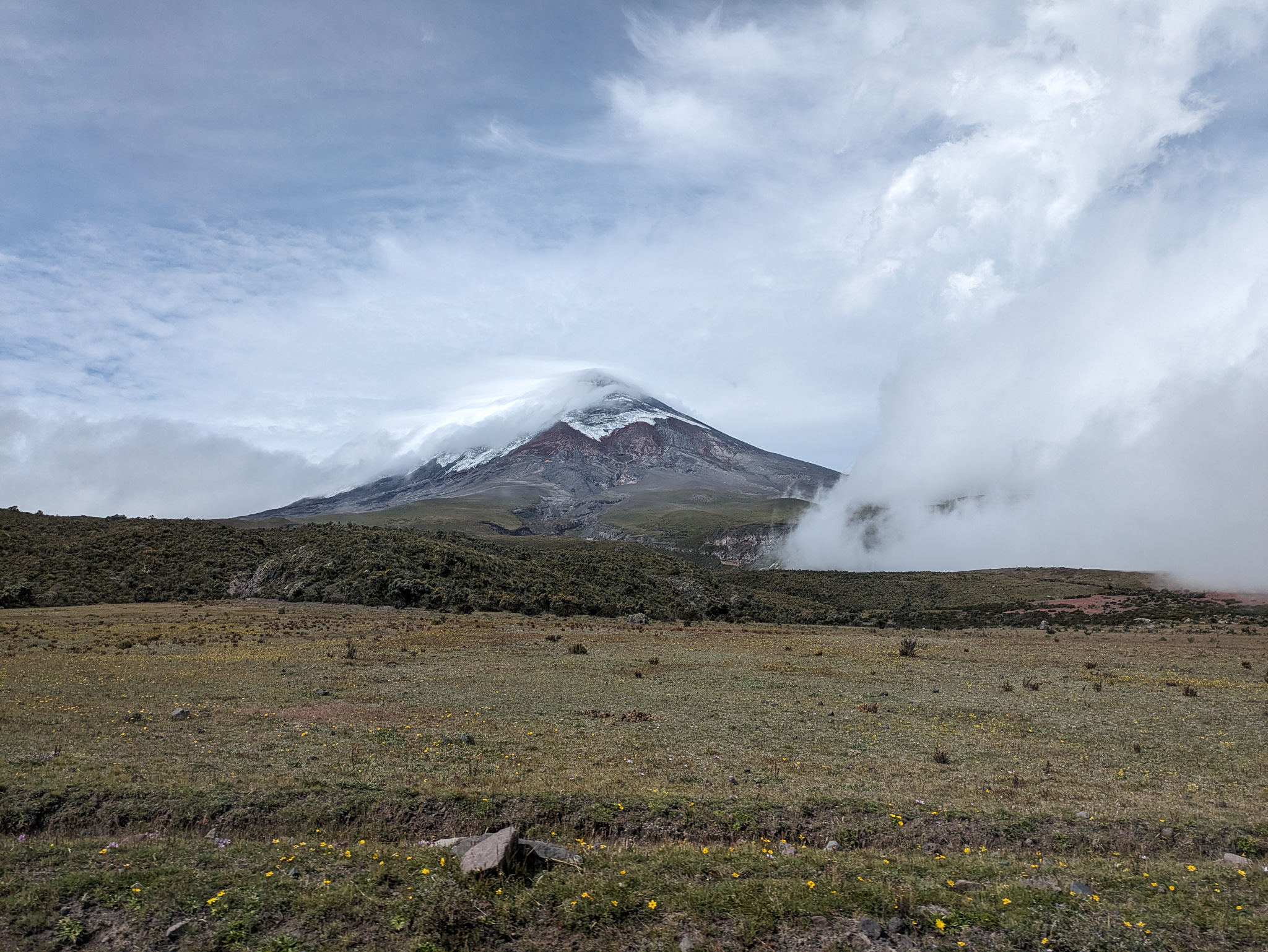
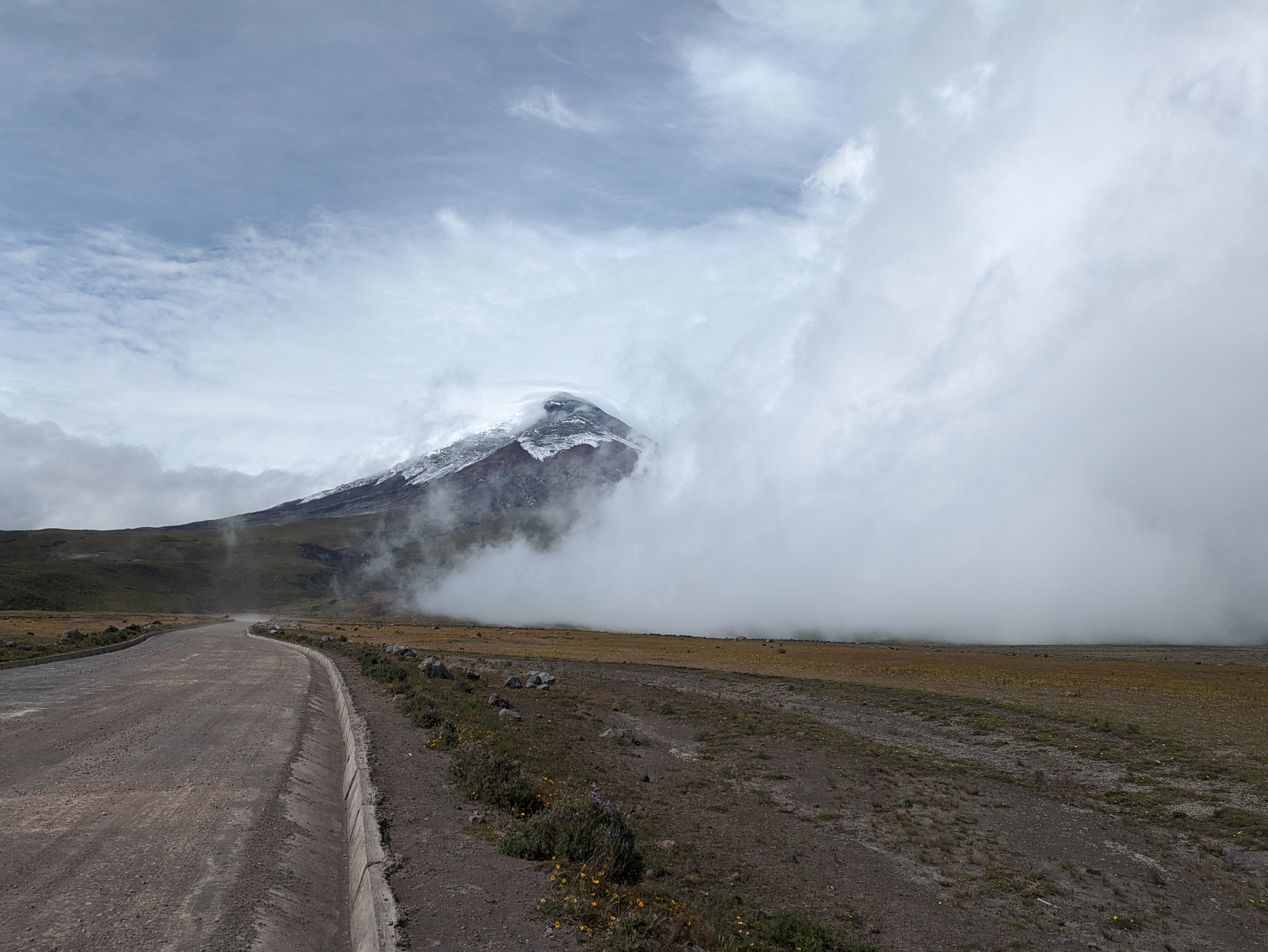

We drove onward and upward out of the Páramo and into the dirt/ash area of the mountain. We parked in a fairly large parking lot at the base of the trailhead climbers have been using for decades to summit the massive peak. It was windy. It was so windy our guide decided we would be better off skipping the switchbacks and climbing directly up within the shelter of a canyon. It’s hard to know if we received any shelter from the wind, but it sure didn’t seem that way. We hiked up a canyon filled with soft sand/ash against the wind. It was slow going. We hiked up to the refuge at 16,000 feet. It was slow going, despite our desire to get out of the cold wind. Atmospheric pressure drops about 50% for every 16,000 feet in elevation. So we were hiking up a steep canyon, into the wind, with only about 50% of the air we are used to breathing. It’s a fascinating experience.
Refugio José Rivas
Eventually we reached the refuge, which is a pretty large building where climbers used to sleep while waiting for the right time to attempt the summit. Nobody has slept there since the upper mountain closed, but they still run a little snack and gift shop. There are several signs blocking the trail up from the refuge. Like many others have obviously done, we stepped past the “do not cross” signs and climbed just a little higher. The refuge sits about 50 feet below 16k and we really wanted to hit that magical number. And so we did.
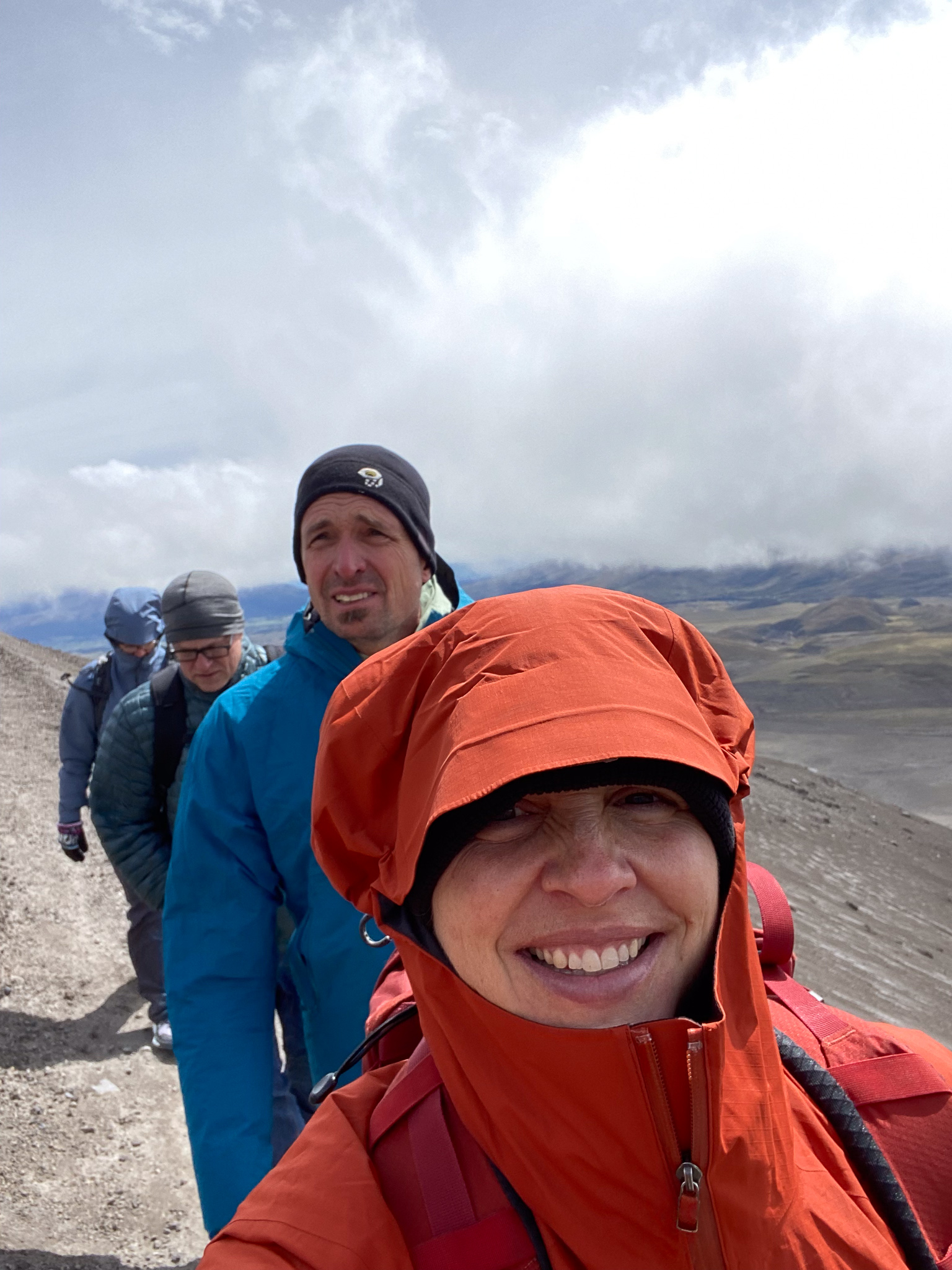
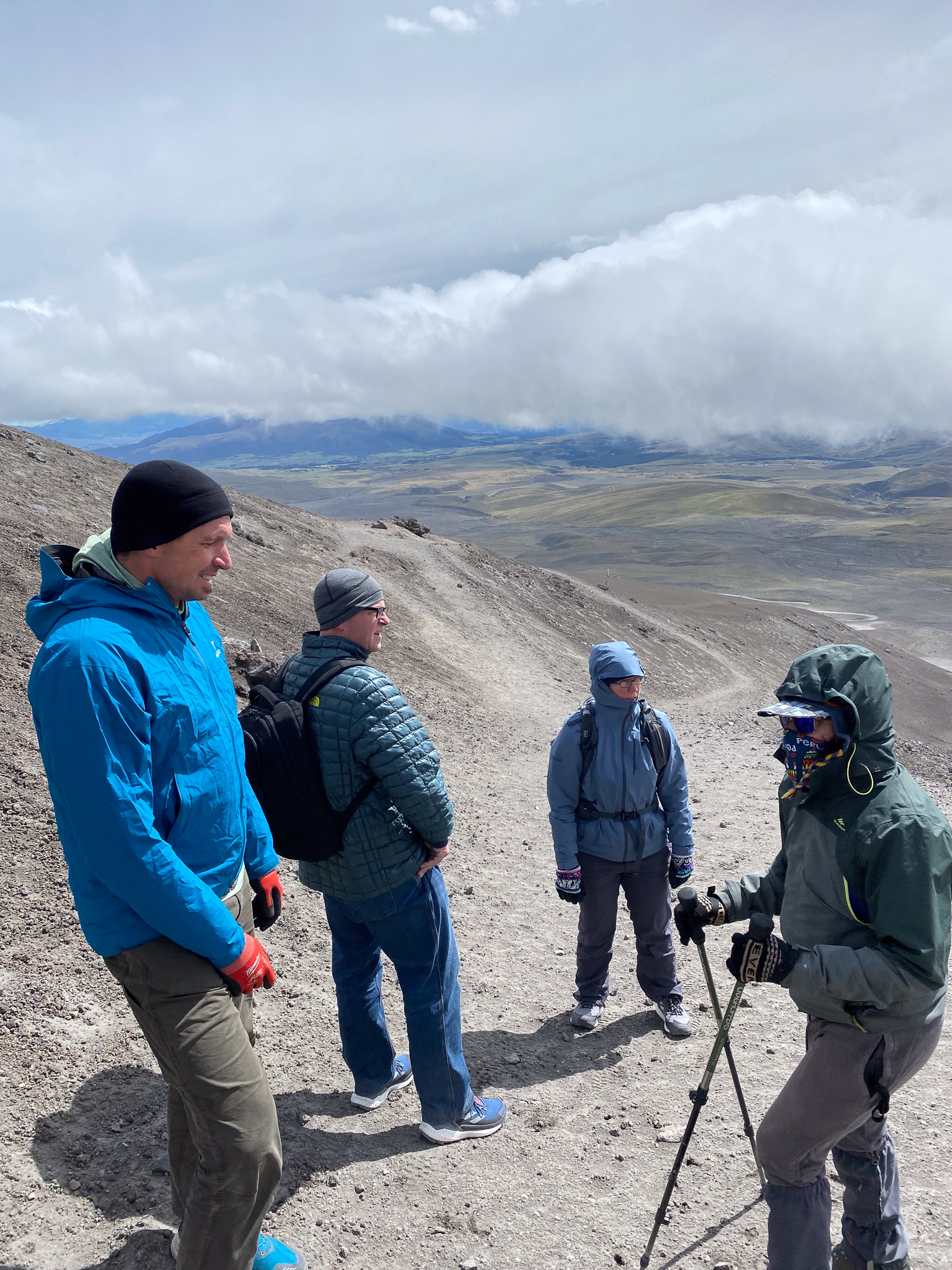
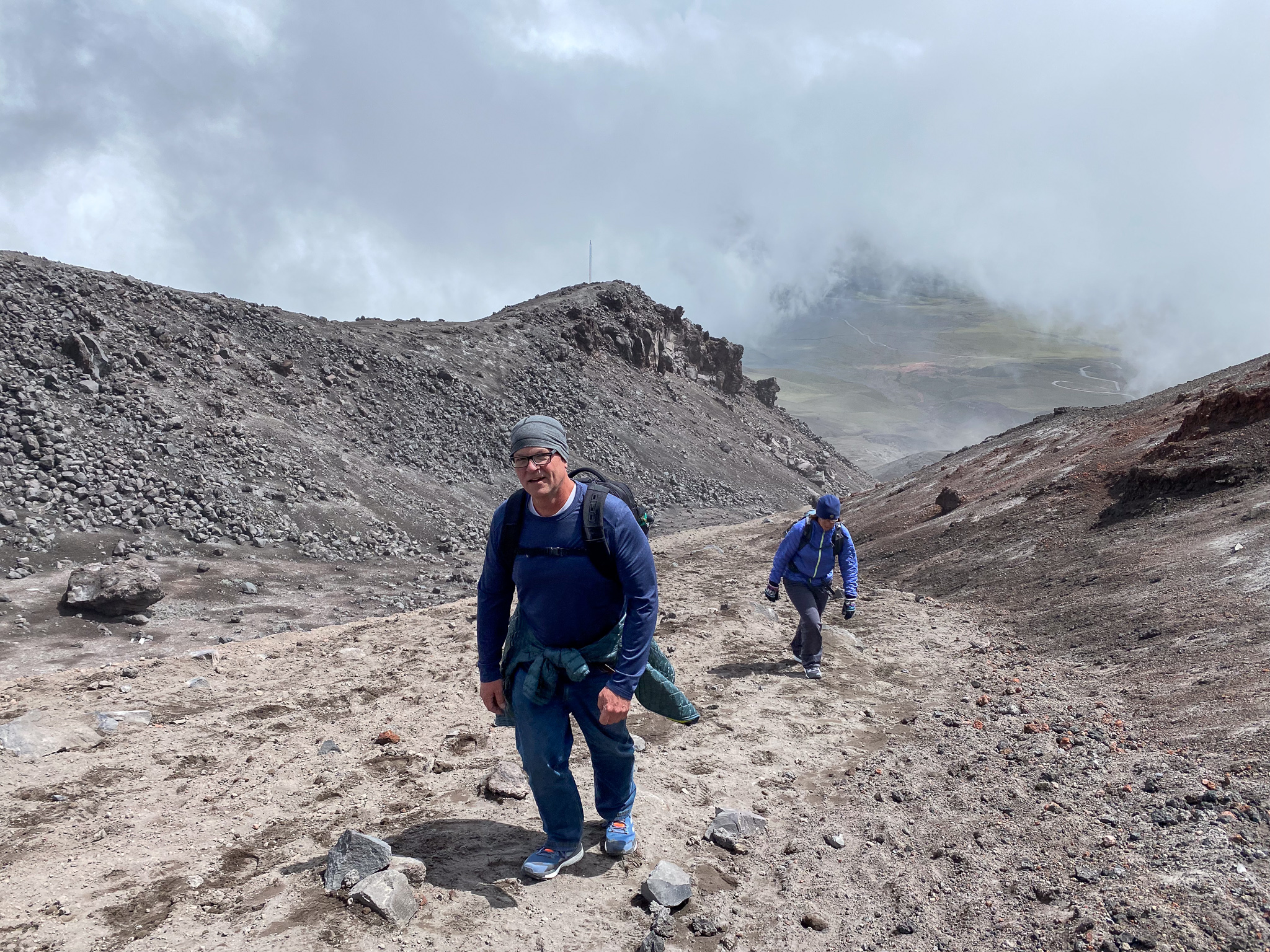
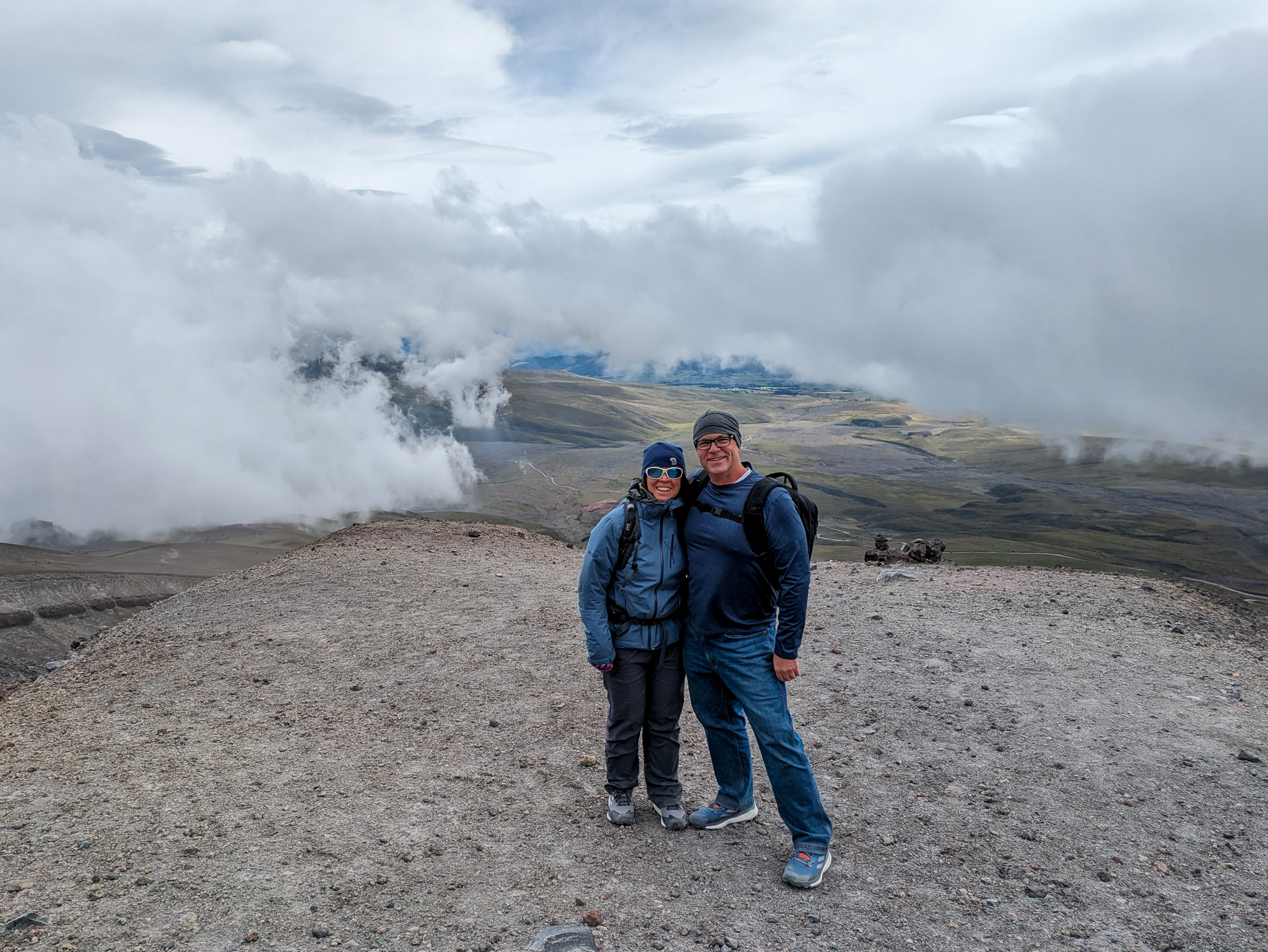
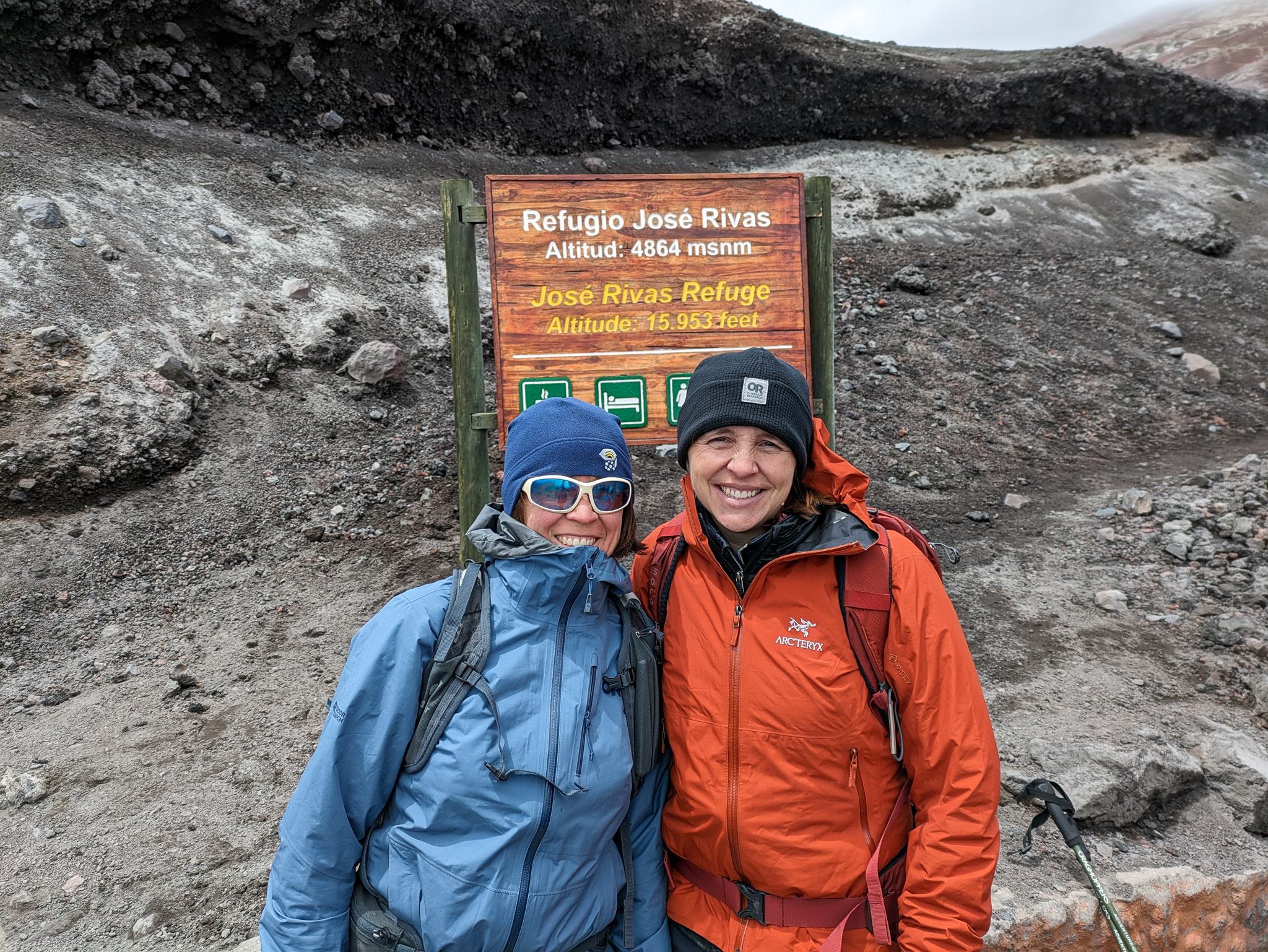

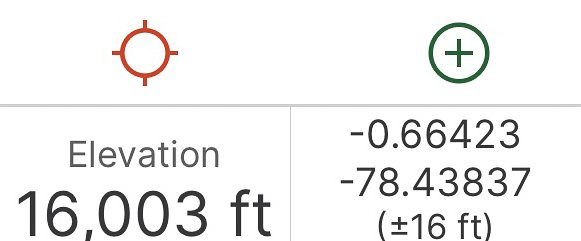
After a few minutes enjoying hot chocolate at the climber’s refuge, we headed back down to the van. We stopped at a small lake inside the national park before continuing on to lunch at a cute little hotel owned by the tour company in a nearby rural town. After lunch we walked down the road a bit without our guides. It was really nice and relaxing. We saw several types of trees we hadn’t seen before with really interesting flowers. Brett decided to pick one of the really large trumpet-shaped flowers and stick it in his mouth. It turned out to be a poisonous flower, but he was fine. Eventually our guides found us and we hopped back in the van and headed back to Quito.
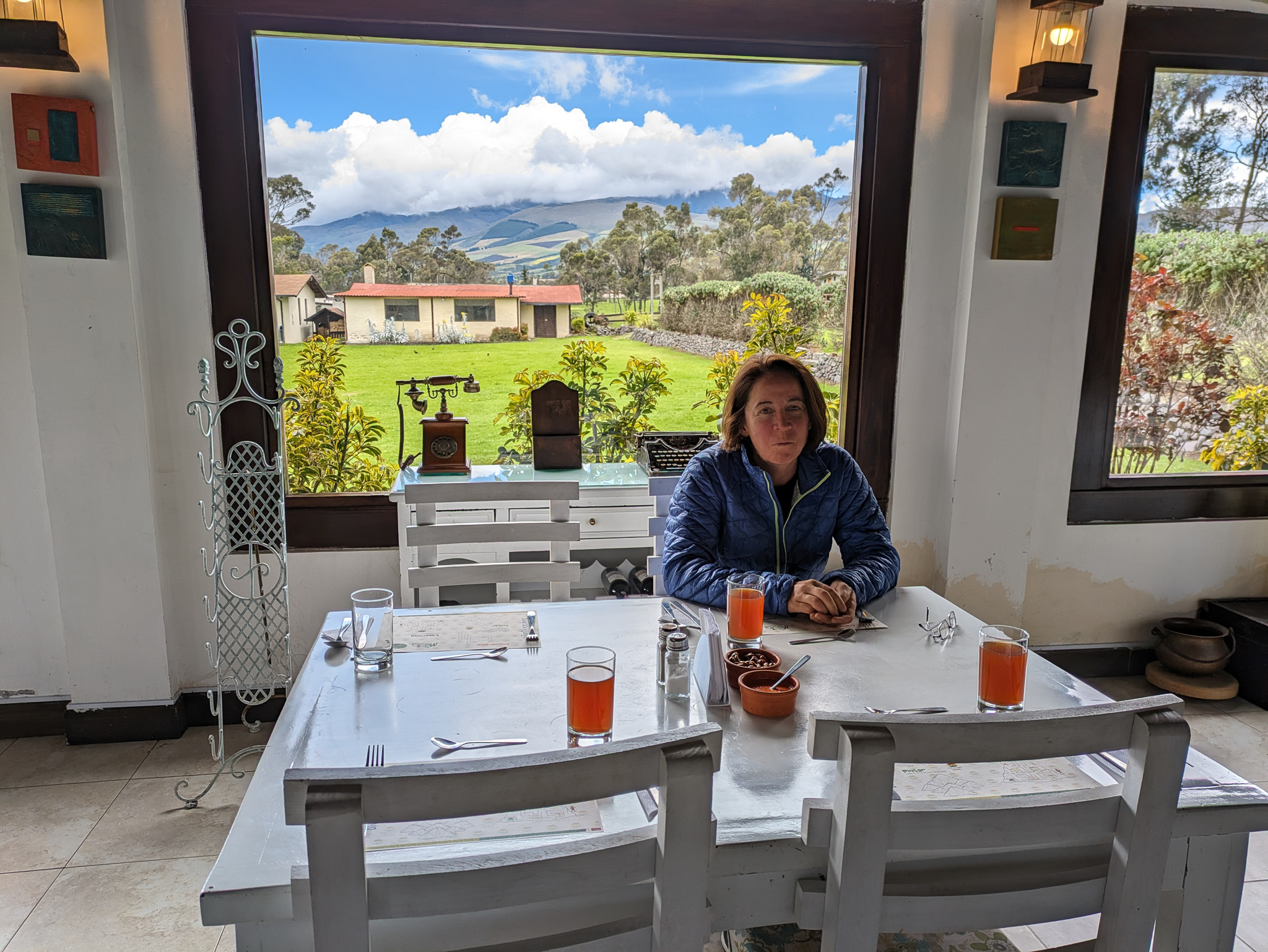
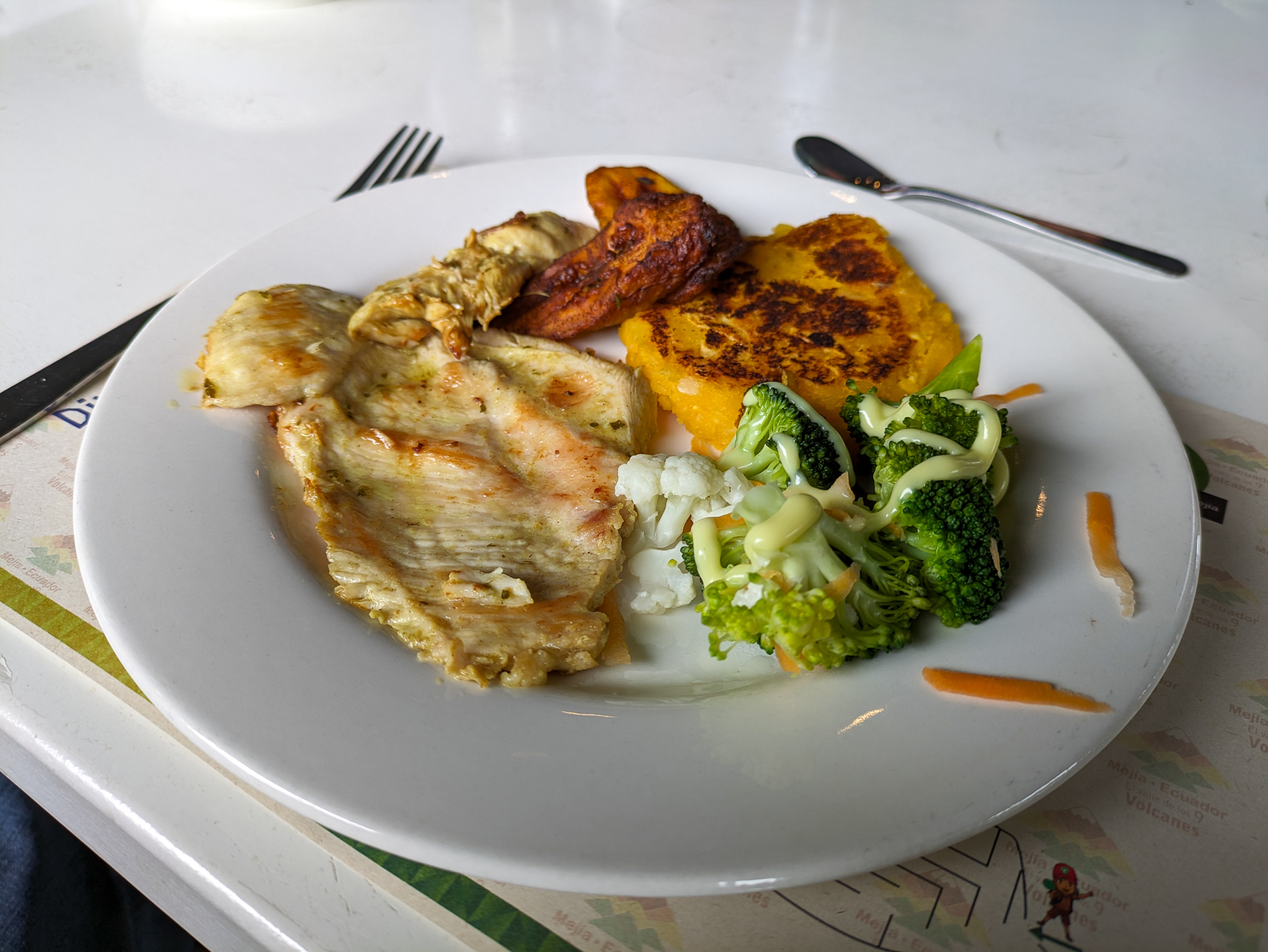
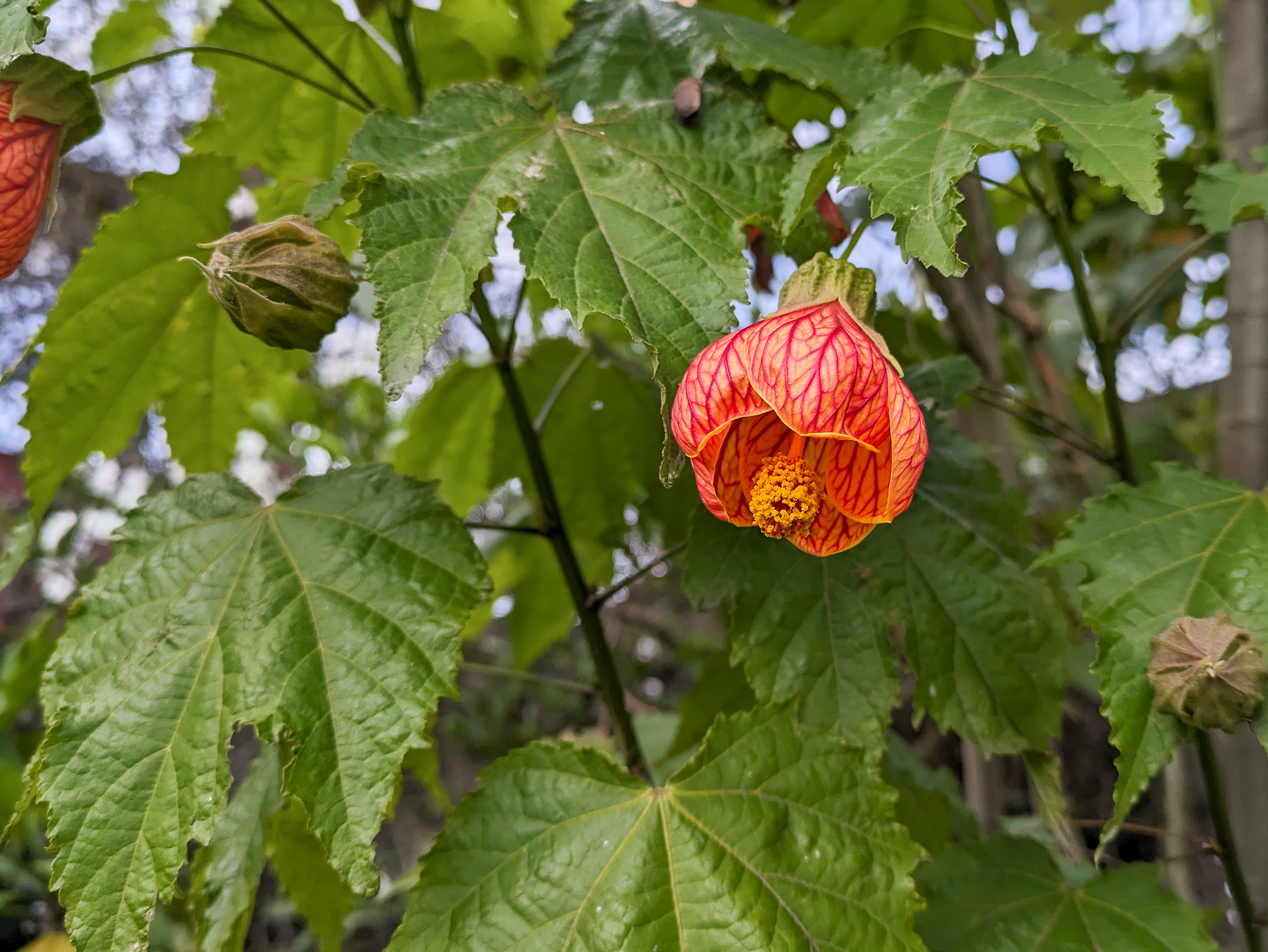
Once back in Quito we decided to spend some time checking out Parque La Carolina. We had walked along the outside of the park earlier this morning to meet our guides, but it looked like a really fun place, so we decided to check it out. The first thing we saw was whole families playing soccer together – including little kids, then families playing Ecuadorian volleyball, families riding mountain bikes on the flow track they have setup, etc. The park is very popular with families and family activities on weekends. It was pretty magical. I was also impressed by all the fancy buildings surrounding the park. I think it would be really fun to come back and stay a few months in Quito learning Spanish and working remotely.
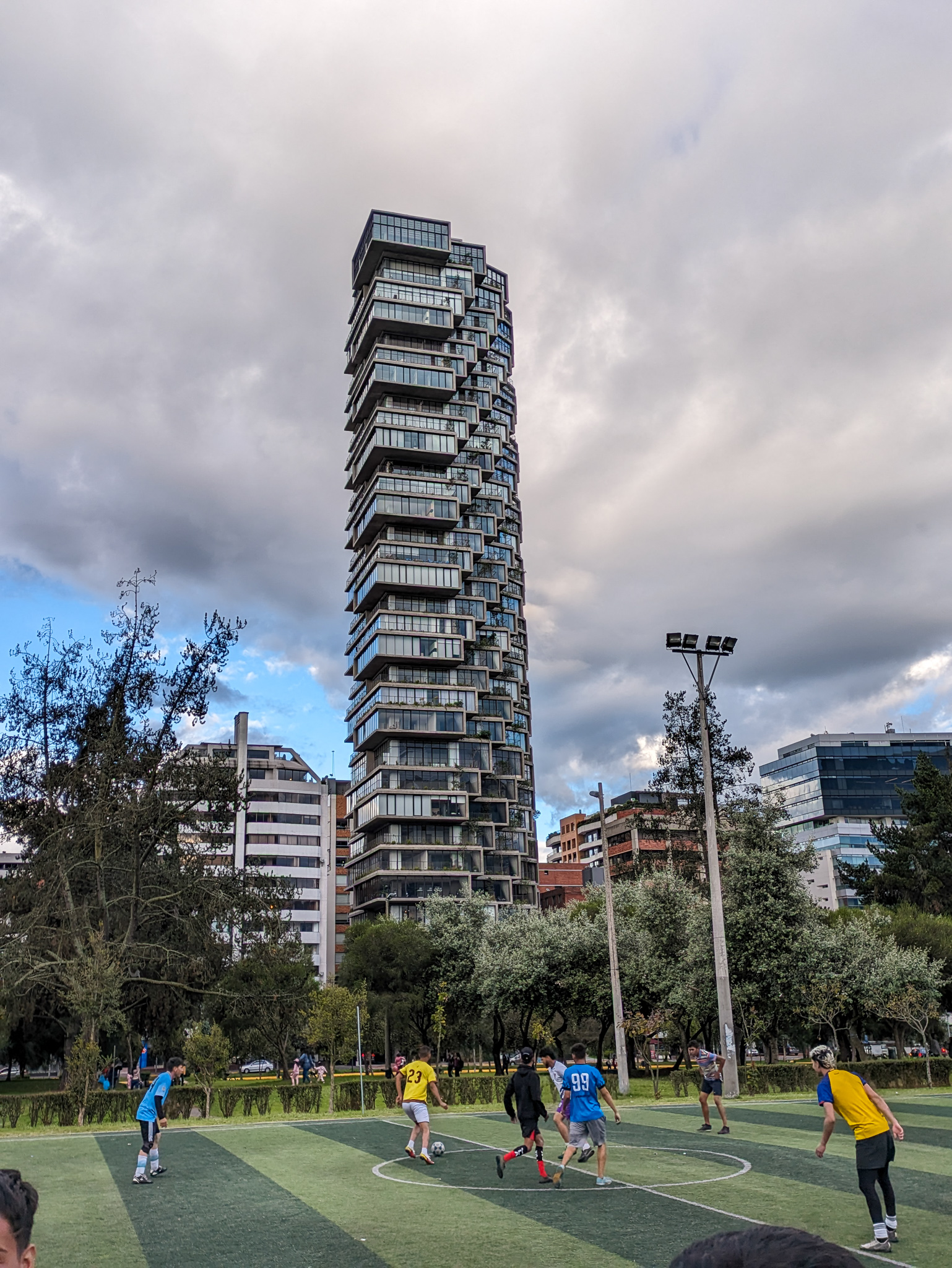
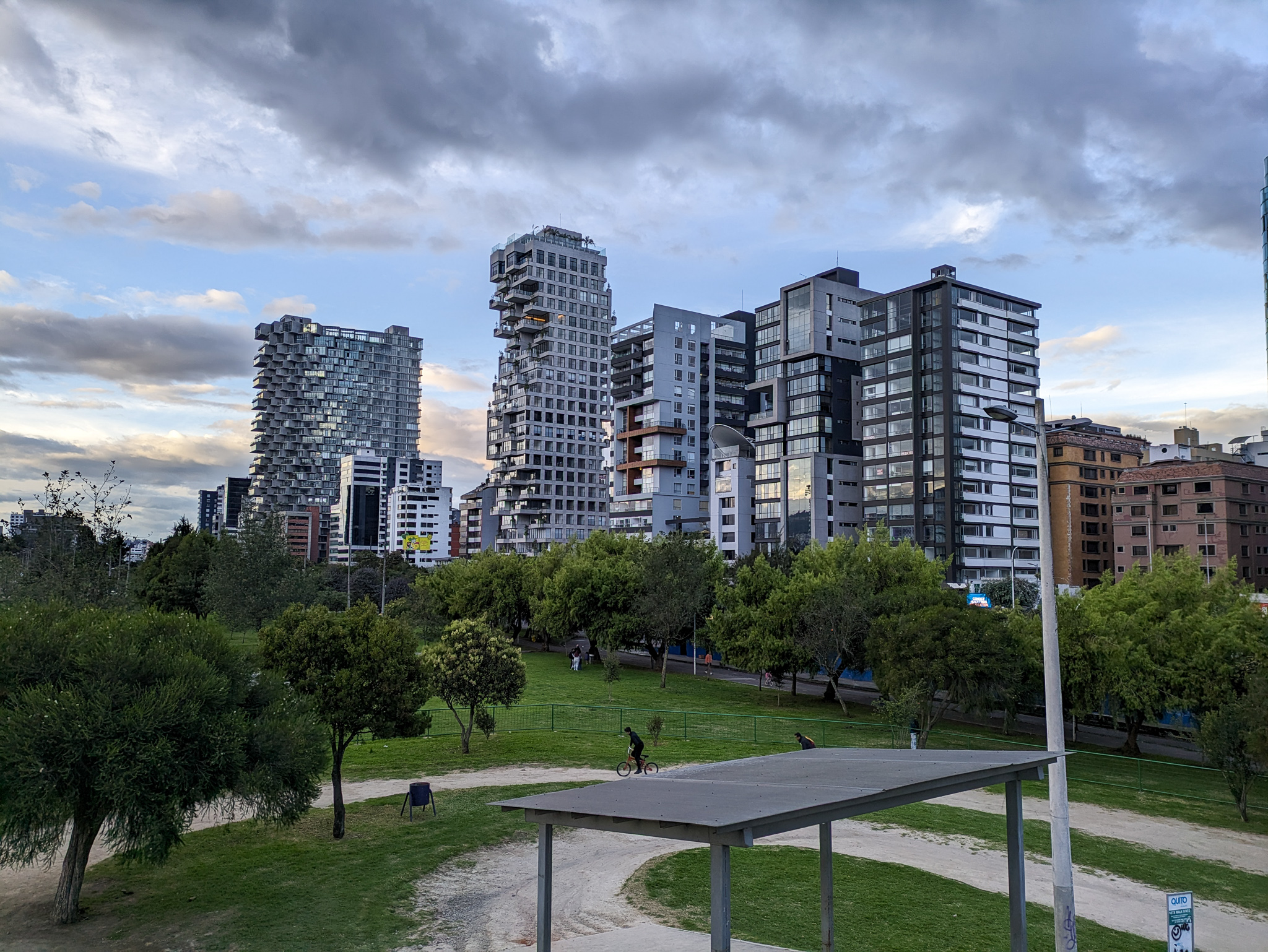
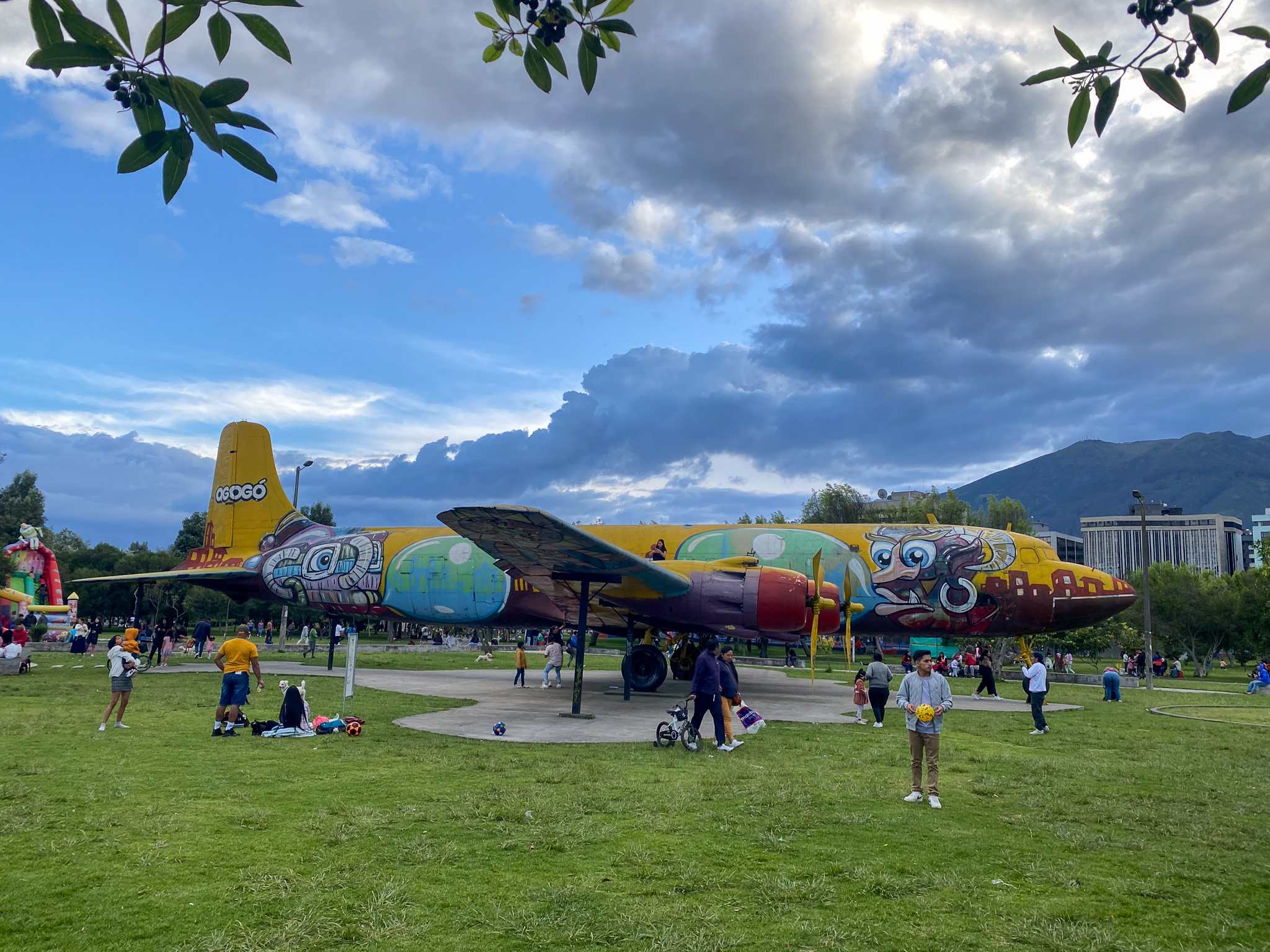
We walked through the park until it started to get dark. We decided to have dinner at fancy Italian place (Via Partenope) and then, to the surprise of absolutely nobody, we found ourselves back at Sweet & Coffee for a little dessert. We didn’t get a lot of items, but we did get passion fruit cake and some chocolate milkshakes.
